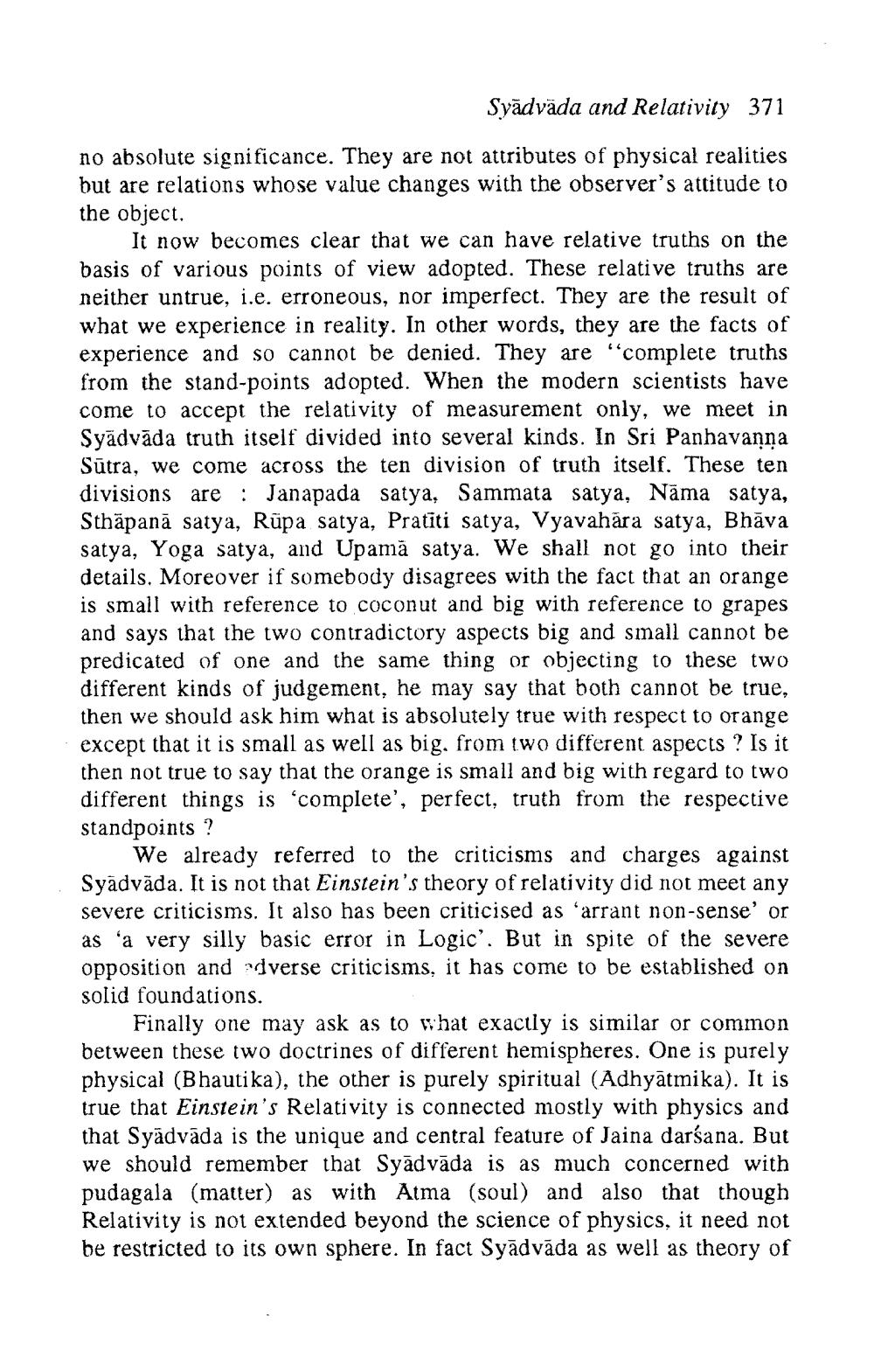________________
Syādväda and Relativity 371
no absolute significance. They are not attributes of physical realities but are relations whose value changes with the observer's attitude to the object.
It now becomes clear that we can have relative truths on the basis of various points of view adopted. These relative truths are neither untrue, i.e. erroneous, nor imperfect. They are the result of what we experience in reality. In other words, they are the facts of experience and so cannot be denied. They are “complete truths from the stand-points adopted. When the modern scientists have come to accept the relativity of measurement only, we meet in Svädvāda truth itself divided into several kinds. In Sri Panhavanna Sūtra, we come across the ten division of truth itself. These ten divisions are : Janapada satya, Sammata satya, Nama satya, Sthāpanā satya, Rüpa satya, Pratiti satya, Vyavahăra satya, Bhāva satya, Yoga satya, and Upamā satya. We shall not go into their details. Moreover if somebody disagrees with the fact that an orange is small with reference to coconut and big with reference to grapes and says that the two contradictory aspects big and small cannot be predicated of one and the same thing or objecting to these two different kinds of judgement, he may say that both cannot be true, then we should ask him what is absolutely true with respect to orange except that it is small as well as big, from two different aspects ? Is it then not true to say that the orange is small and big with regard to two different things is 'complete', perfect, truth from the respective standpoints ?
We already referred to the criticisms and charges against Syadvāda. It is not that Einstein's theory of relativity did not meet any severe criticisms. It also has been criticised as "arrant non-sense' or as a very silly basic error in Logic'. But in spite of the severe opposition and adverse criticisms, it has come to be established on solid foundations.
Finally one may ask as to what exactly is similar or common between these two doctrines of different hemispheres. One is purely physical (Bhautika), the other is purely spiritual (Adhyatmika). It is true that Einstein's Relativity is connected mostly with physics and that Syädvāda is the unique and central feature of Jaina darśana. But we should remember that Syādvāda is as much concerned with pudagala (matter) as with Atma (soul) and also that though Relativity is not extended beyond the science of physics, it need not be restricted to its own sphere. In fact Syādvāda as well as theory of




